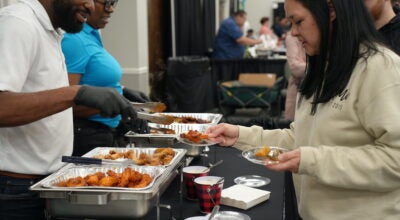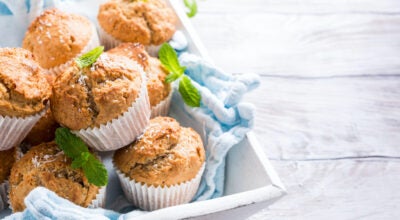No reason to fear the holiday buffet
Published 9:10 am Friday, December 23, 2011
By ANGELA TREADAWAY / Guest Columnist
Holidays are a time for feasting, but improper food serving and storage can turn Christmas dinner into a fiasco. Family and guests can get food poisoning from food that sits out too long or is not cooked for the right amount of time.
What is foodborne illness: Food contaminated by bacteria, viruses and parasites can make you sick. Many people have had foodborne illness and not even known it. It’s sometimes called food poisoning, and it can feel like the flu.
Symptoms may include stomach cramps, nausea, vomiting, diarrhea and fever. Symptoms can start soon after eating contaminated food, but they can hit up to a month or more later.
The Centers of Disease Control estimates that there are as many as 13 million cases of foodborne illness in the US every year. Most cases of foodborne illness can be prevented by using safe food handling practices and using a food thermometer to check food is cooked to a safe internal temperature.
It’s always important to keep foods out of the danger zone, which is between 40°F and 140°F to prevent the growth of harmful bacteria. To do this, just keep hot foods hot, at least 140°F and keep cold foods at 40°F or lower.
Preparing and serving holiday buffets: Do not let foods linger during preparation; cook them thoroughly and serve them promptly. Keep hot foods hot with warming trays, chafing dishes or crock pots. Keep cold foods cold by placing serving dishes on crushed ice.
Remember the “two-hour rule,” especially when entertaining with a large meal or buffet. Don’t let perishable foods linger for longer than two hours in the danger zone.
Keep replacement dishes of food hot by keeping them in the oven or a pot or cold by keeping them in the refrigerator or a cooler during the buffet.
Do not add new food to a serving dish that has been sitting at room temperature for more than two hours. Remember to change serving utensils as well.
Provide serving spoons and tongs for every dish served. Even finger foods, such as cut vegetables, candies, chips/nachos and nuts, should have serving implements to prevent contamination between guests.
Traveling with food: Wrap hot food in foil and heavy towels, or carry in insulated containers to maintain a temperature of at least 140°F.
Store cold foods in a cooler with ice/freezer packs. Full coolers keep their temperature better than partially full ones, so add extra insulation to take up unoccupied space.
This will also prevent containers from sliding, falling over and leaking.
Angela Treadaway is an extension agent for North Alabama Region 3 in Columbiana. Contact her at 669-6763 or treadas@aces.edu.









